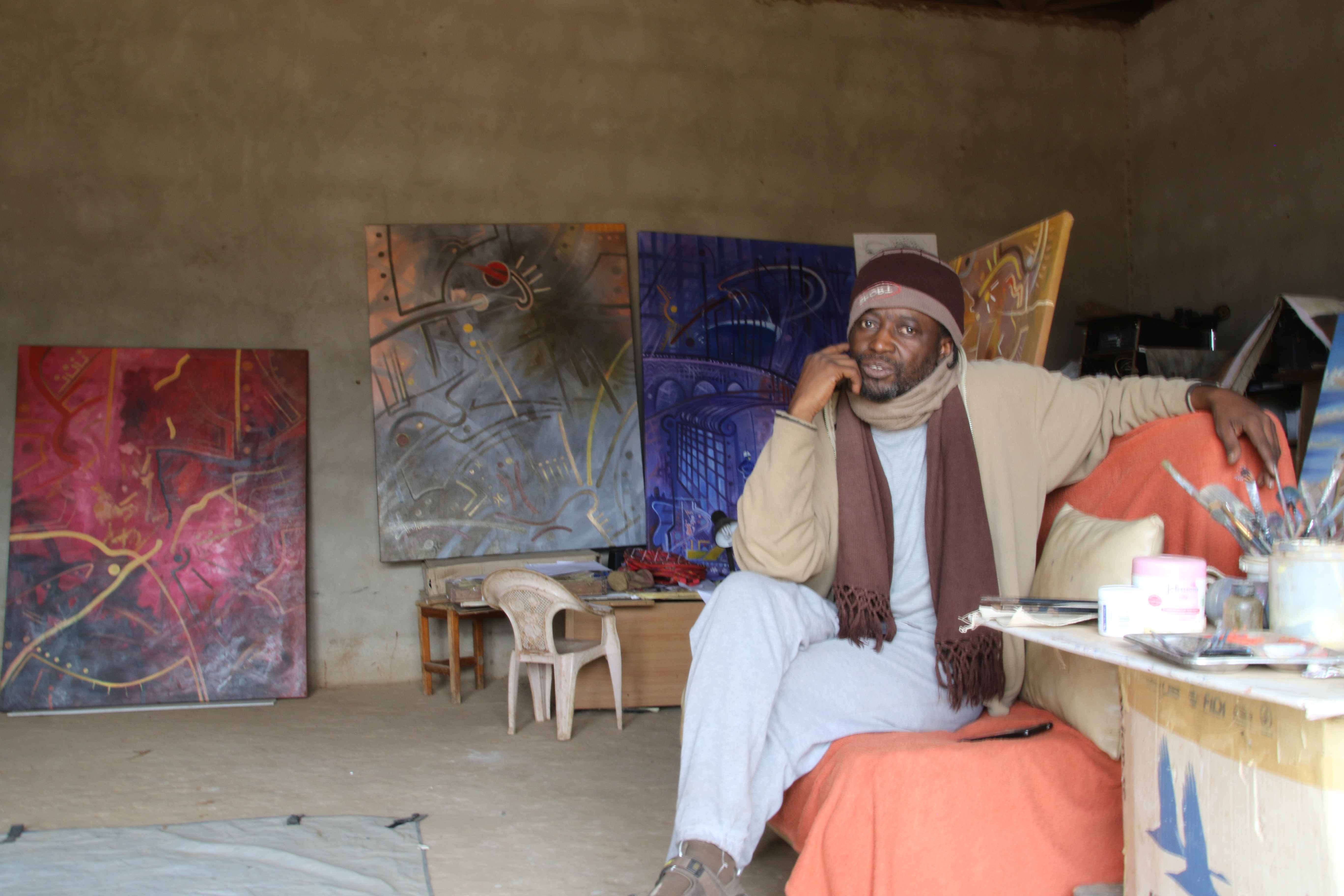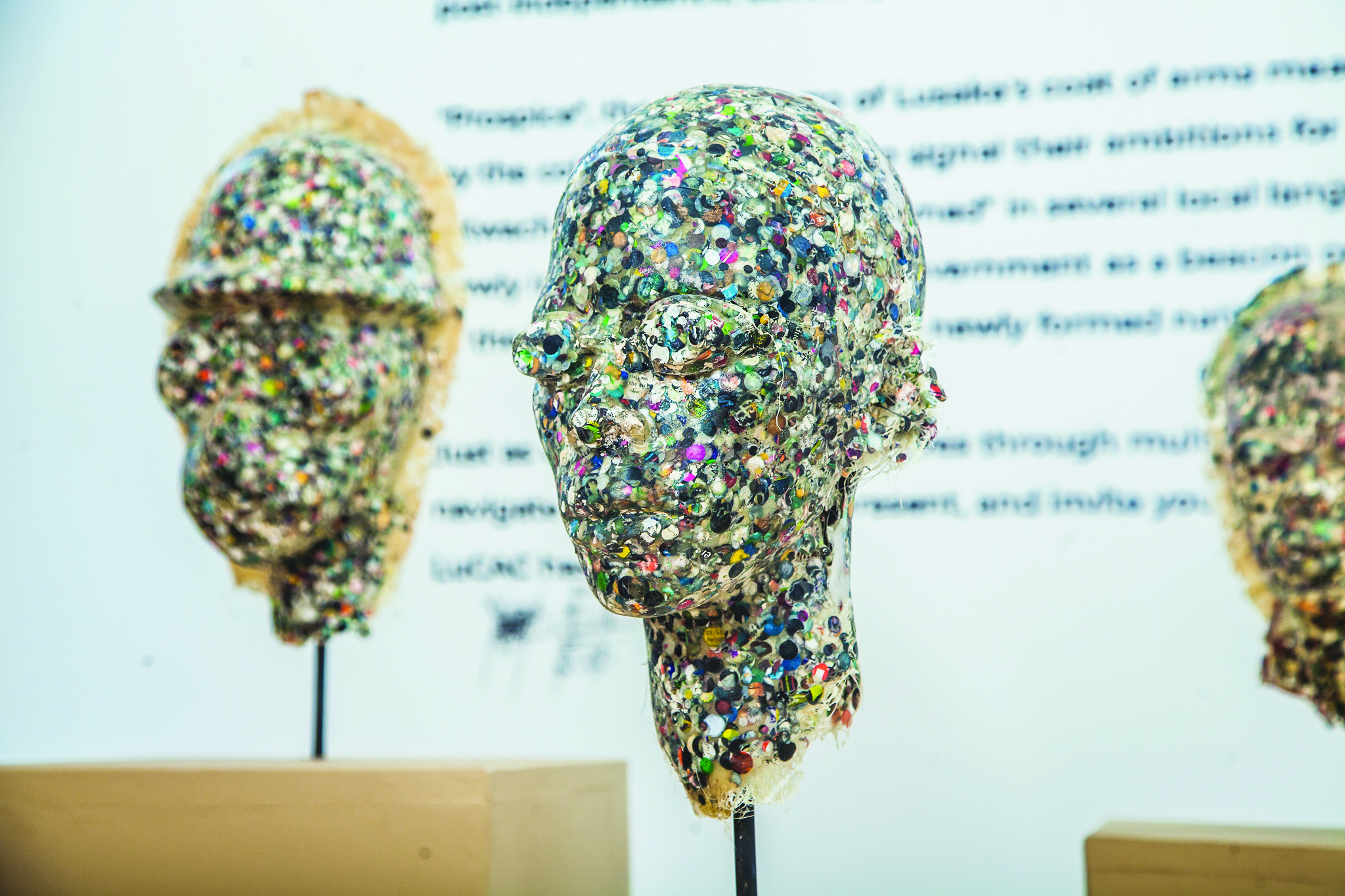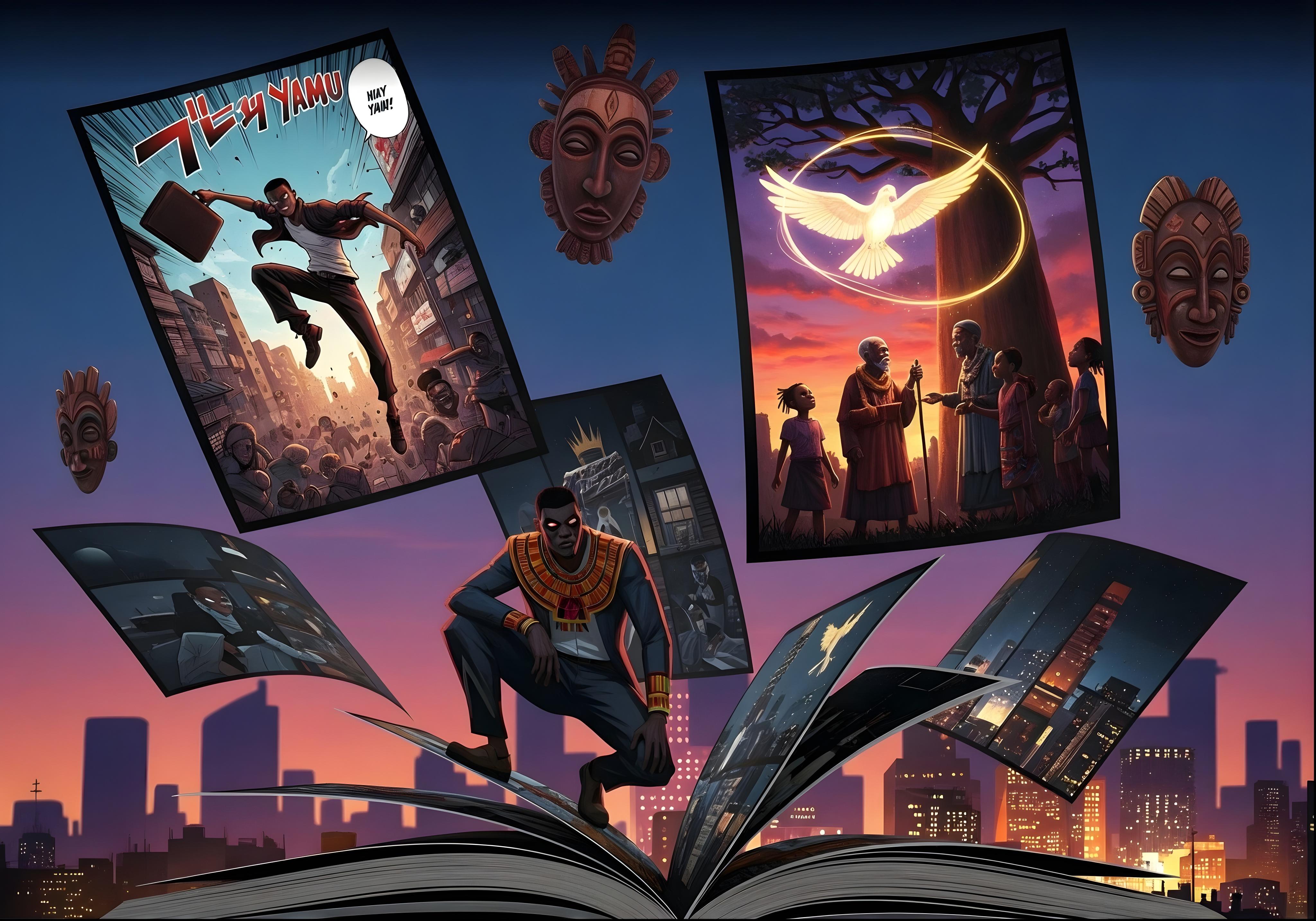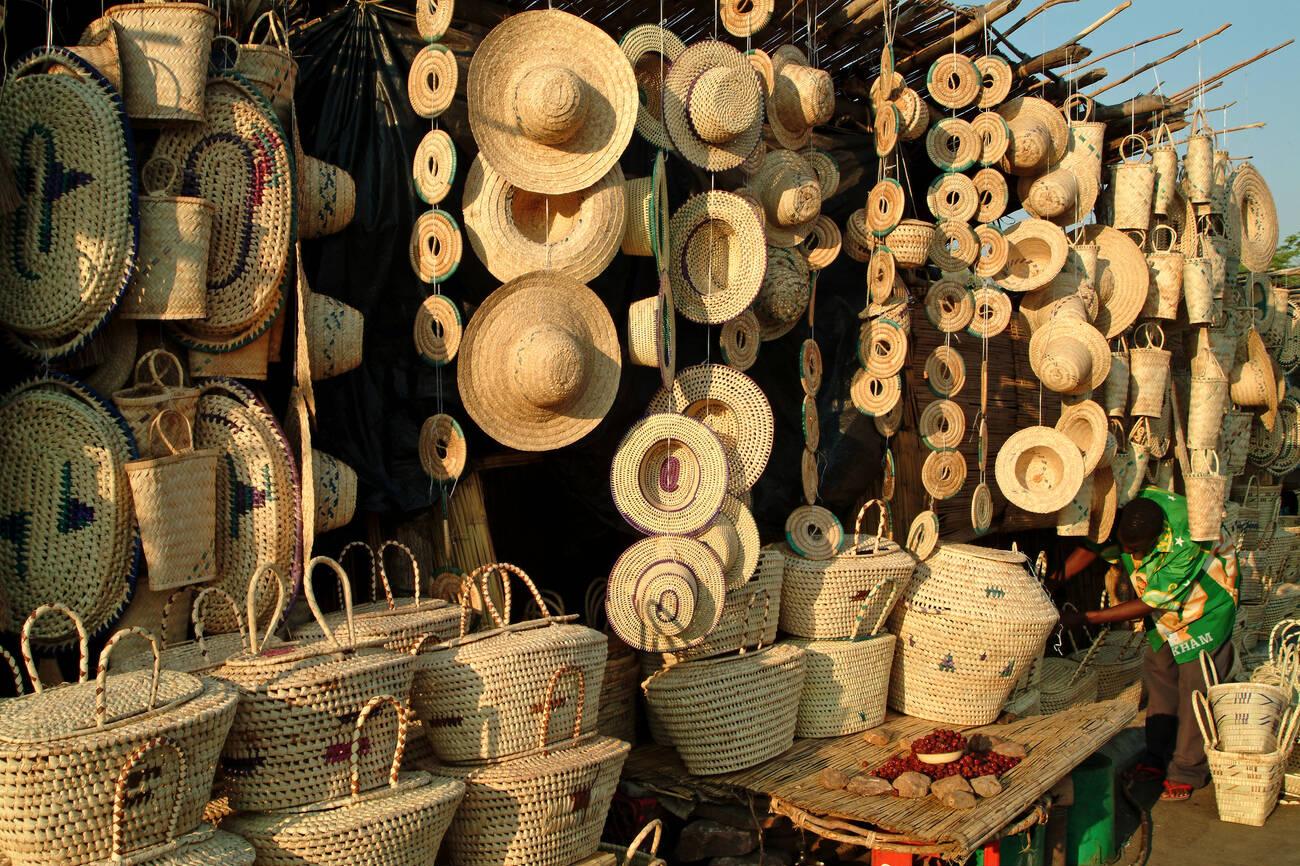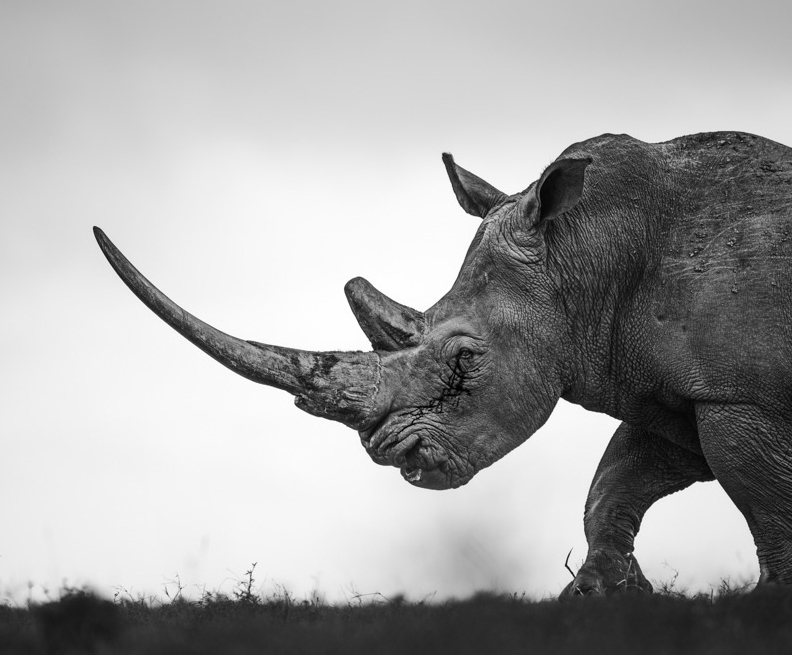‘I was born in the hills of Chipata, Eastern Province, I grew up exploring the hills and my own surname means a small hill, and it comes with no surprises that my art goes far over the hills into the valleys and up again to another range of hills.’ – Zenzele Chulu
Kenneth ‘Zenzele’ Chulu’s invitation to visit him in his studio was as gracious as the artist himself. He is relaxed surrounded by his interpretations of Zambian rock art. As a child, Zenzele discovered rock art virtually in his own back yard in Zambia’s Eastern Province. Little did he know, rock art would become his passion in years to come.

Rock art sites are found all over Zambia. Close to Zenzele’s childhood home near Chipata in the Msosoka Hills, are the rock paintings that fascinated him as a child. As an adult, he visited Mwela Caves near Kasama and the fascination grew. The World Heritage Site with over 700 paintings dating back to the Stone Age has been vandalised. This started the artist on his quest to save Zambia’s most vulnerable national art treasure. Nachikufu Cave near Mpika is a much smaller site but is unique because it boasts the only black cave painting in the country. The cave is of further historic significance as this is where the Lala and Bisa tribes sought refuge from attacks by rival tribes. Kasanka, famous for its annual bat migration, has a similarly important treasure in Nsalu Cave. The name alone, is priceless as it refers to the animal skin used to wrap clay pots thus, telling something of the daily lives of people who lived in these hills thousands of years ago.

From 1998 to 2003 Zenzele was involved in the documentation of Zambian rock paintings for the Visual Arts Council of Zambia. The vandalism, by both laymen’s graffiti and archaeologists’ greed, angered him to such a degree that for nearly two decades he dedicated himself to raising public awareness. He tackled the problem the way he knows best, through painting. Through his series titled Schematic Tantrums he has become the unofficial ambassador for the preservation of Zambia’s heritage.
Zenzele points out that Zambian rock paintings are not merely paintings of hunters targeting animals. The abstract nature of Zambian rock art reflects a high level of imagination and intelligence. Centuries ago the caves and the mountains where these paintings are found were holy places, the threshold to other worlds located in beautiful landscapes.
The simplicity of rock paintings belies its complexity. Ancient painters used animal blood in their paints to infuse the animal’s potency in their paintings. Blood, urine, water, or egg yolk was mixed with rich soils and other natural compounds found in the bush to produce predominantly red, black, and white paint. Red was made using ground ochre, while black paint was typically made with charcoal, or minerals such as manganese. Natural chalk or kaolinite clay was used to obtain white paint.
Zenzele’s most recent paintings have moved away from ‘tantrums.’ He travelled both physically and spiritually to far hills and mountains. His paintings bear witness to the wonders of our world, where we look beyond shadows to into the soul of the people who, centuries ago, lived between the rivers and mountains of this beautiful country. Simultaneously, he builds on these ancient images to create a vision for the future of Zambia and its people.
Recurring symbolic elements are found in his work and understanding these helps the viewer to appreciate the complexity of Zenzele’s work. His recent paintings are abstract interpretations of ancient motifs in rock art – lines and triangles, circles and dots signifying life, joy, and freedom of spirit. They are rife with movement, featuring energetic curving lines shooting in all directions. Sometimes it seems as if the artists took a handful of stars, sometimes a clay pot full of fireflies and scattered it over the canvas.
He furthermore uses images and symbols from his childhood to deepen the message of his creations. A row of spots often features in his work, an image inspired by his childhood village where the women collected seeds to plant and to feed their families in seasons to come. Out of seed comes new life and growth, a symbol of fertility. He uses colours to reflect the interaction between landscapes and their emotional effects on the human spirit.
Ever exploring, Zenzele Chulu travelled the globe with exhibitions and workshops and helped change the Western world’s perception of African art. Gone are the days when ‘traditional’ African art was seen as the only art of value on the continent. Zenzele and his contemporaries changed this outdated viewpoint and today modern African art stands proudly in the 21st century.
Zenzele’s paintings are in private collections in Zambia, Japan, Brazil, the USA, South Africa, Sweden, Denmark, France and Venezuela, among others. He was a finalist in the Osaka Triennale in Japan. His work was exhibited in the Tajan Auction in Paris next to the works of celebrated artists such as Andy Warhol and Roy Lichtenstein.
He smiles fondly when he tells of his humble beginnings as an artist, scribbling in the sand. He has high regards for teachers, who not only noticed, but also developed his talents. As a boy, he became the class artist and early on his drawings decorated the classroom walls. He later studied at Evelyn Hone College for his art teachers diploma and taught at Kabulonga Boys High School for a few years. Zenzele had various stints in managing the Henry Tayali Gallery on the showgrounds in Lusaka.
Born on Independence Day, 24th October, in 1967 he was named Kenneth in honour of President Kenneth Kaunda. In the spirit of Independence Day, his nickname is Zenzele, meaning ‘Do it yourself.’ No wonder he undertook the mammoth task of celebrating and preserving Zambia’s precious heritage from the far hills of the country through art.
